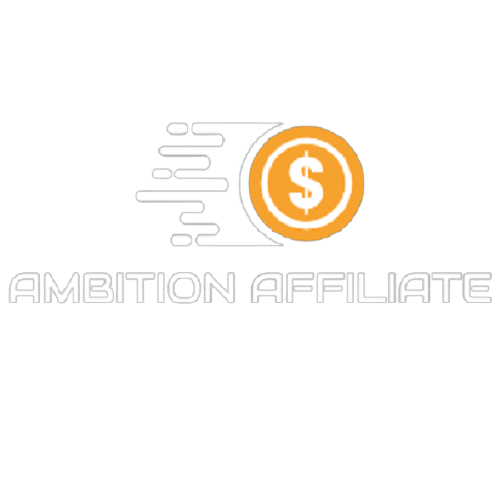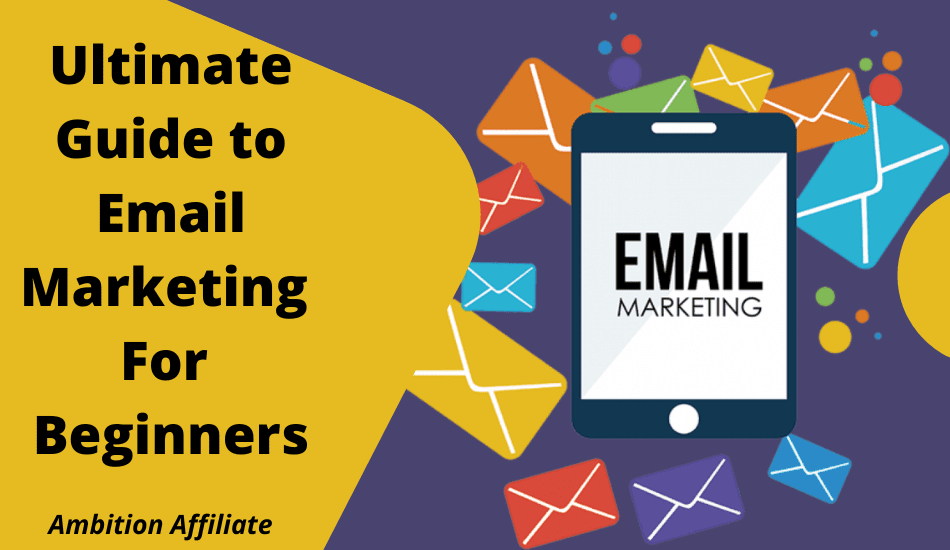This ultimate guide to email marketing for beginners will explain what it is, how it works, and how to get started. By the end, you’ll have a solid understanding of the fundamentals and the skills necessary to implement an efficient email marketing strategy for your company.
The most lucrative and economical direct marketing method is email marketing, which yields a $42 average return on investment for every $1 invested.
Email should be a core component of your digital marketing plan just for this reason. It’s like leaving money on the table if you don’t use email marketing.
But if you’re a bit confused about where to start, that’s perfectly normal. Email is a huge discipline. Beginners can easily get lost in a sea of tools, techniques, and terminology.
Table of Contents
What is email marketing?
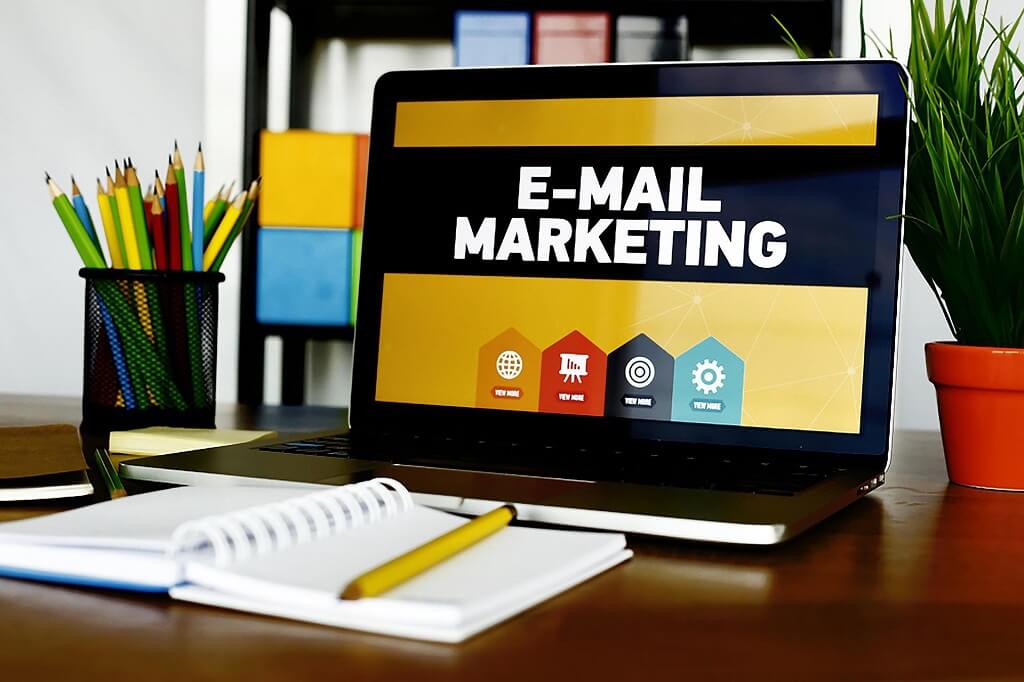 Email marketing is a digital marketing tactic that uses emails to convert leads into customers and convert existing customers into repeat buyers.
Email marketing is a digital marketing tactic that uses emails to convert leads into customers and convert existing customers into repeat buyers.
With a projected global market value of $17.9 billion by 2027, email marketing continues to grow.
Read on to find out why email marketing is the golden ticket to online business success.
Benefits of Email Marketing
There are many benefits of email marketing for business owners:
- Reach a global audience – There are 4 billion email users and 5.6 billion active email accounts every day (80% of the population).
- Higher Conversion Rates – It is more effective than social media sites at generating new customers
- Guaranteed interest – The leads who receive your emails are already interested in your offer because they gave you their email addresses in the first place
- Strengthen Customer Loyalty – Maintain strong relationships through constant contact
Disadvantages of Email Marketing
However, this digital marketing power tool also has disadvantages:
- Information Overload – Sending too many emails with too much information can overwhelm your leads
- Impersonal and irritating – Without constant tweaking and attention, your emails could become a nuisance and sound robotic
- Expensive Email Sends – Depending on the size of your list and the platform you use, sending multiple emails can be expensive
Read on as we dive into email marketing best practices to help you reach your audience and keep them happy.
Types of Email Marketing

Source: ReallyGoodEmails.com
Depending on what you want to communicate, you send different messages – this also applies to your email marketing.
Here are some of the most common types of marketing emails sent as part of a company’s digital marketing strategy:
- Welcome Emails – Greet new subscribers with a warm email or email sequence
- Newsletters – Keep your customers informed and updated on business and industry news
- Abandoned Cart Emails – Remind potential customers of their uncompleted purchases on your eCommerce store
- Transactional Emails – Confirm purchases and orders on your eCommerce store
- Promotional emails – To create new deals and send out promotional messages, use stories and testimonials.
- Event Invitations – Invite leads and customers to attend your events and get more engagement
- Re-Engagement Emails – Clean up your list by targeting cold leads and showing them what’s missing
These types of emails cannot be implemented randomly or in isolation.
You need to create a complete branding strategy and email marketing campaign, using different types of emails at different times to nurture your leads.
For example, your email marketing campaign for a new blog subscriber might appear as follows:
1st Email – Welcome email with a link to free content
2nd Email – Responding to a common pain point or issue
3rd Email – The story of how you solved a similar problem
4th Email – One of your customers’ success stories
5th Email – Offer a discount on your problem-solving product or service.
Now that you have a rough idea of how a campaign is structured, let’s look at how to actually create it.
Set up a winning email marketing strategy
Whether you want to promote your products or generate more sales, successful email campaigns are your best investment.
This step-by-step guide will walk you through the detailed process of setting up an effective email marketing campaign.
We’ve also compiled a ton of email marketing tips to get you started.
Step#1: Grow your mailing list
Nowadays, simply asking your website visitors to sign up to receive emails is not enough.
It’s crucial to provide a lead magnet in exchange for someone’s email address.
Lead magnets are extremely effective for increasing the number of people on your subscriber list.
Things you could offer include:
- Free giveaways
- eBooks
- Webinars
- Coupons
- Useful tips
- Newsletter
The key is to provide users with tools and information that they find valuable enough to remember and encourage.
For example, Sam Dey is giving away his “Formula To Generating Leads & Sales” for free.
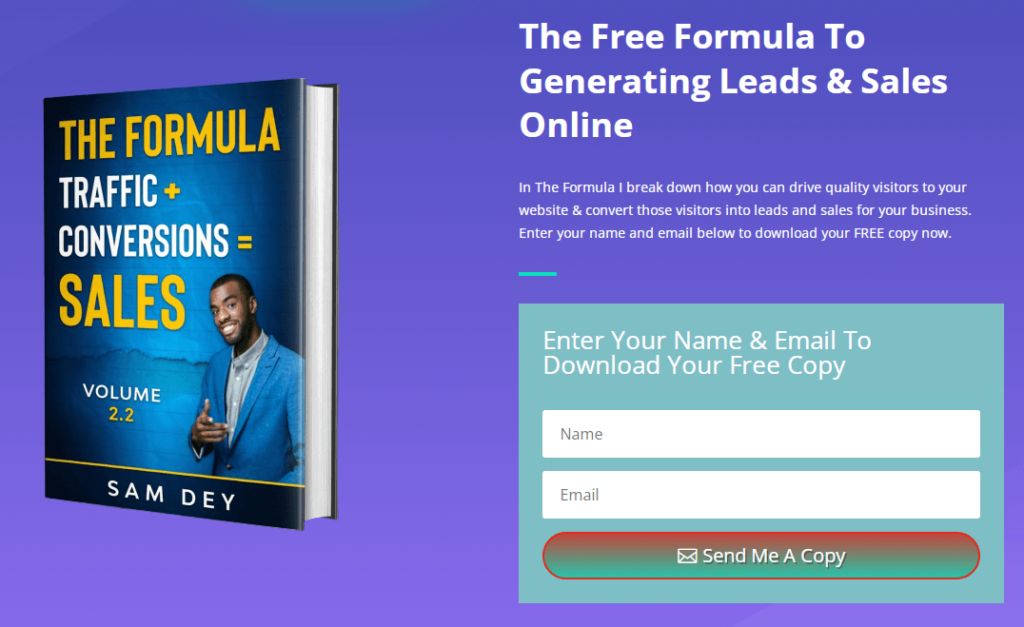
Source: DeyTips.com
In exchange for their email addresses, Sam gives his leads access to important and effective tips in e-book form that will have a real impact on how to generate leads and sales online.
Because the value of this lead magnet is so high, people are happy to give them their contact details and look forward to their digital communication.
In addition, Sam also creates a lot of valuable free content through other marketing channels like YouTube, which improves his brand reputation.
Another example of a great lead magnet is the free class Ron Stefanski offers on his One Hour Professor website.

Source: OneHourProfessor.com
Aimed at beginners, this free course is constantly updated by Ron to ensure it is always providing up-to-date value for new leads.
Ron also keeps every message he sends to his leads less like a marketing email and more like an honest look into his life.
Choosing and creating your lead magnet to attract new subscribers depends on your niche and audience.
Remember how these two digital marketers have applied different best practices and ensured their success.
Where to place your opt-in forms
Now that you’ve decided what you want to offer, you can install a form or popup on your website to offer your visitors more valuable content.
High-converting locations for your opt-in prompt include:
- Your about page
- The header or footer of your website
- Within your blog posts
- Your sidebar
- In a timed pop-up – A site visitor sees this after they’ve been on your site for a specified amount of time
- In an exit-intent popup – These appear when the visitor is about to leave your website
An example of a clever exit-intent popup is the one used by Olivier Roland on his English blog:

Source: Olivier-Roland.com
This nifty message pops up when you’re scrolling and about to leave the site, prompting you to opt-in so you don’t miss out on this freebie.
The design is eye-catching and it also includes Olivier’s book, indicating a higher value to purchase later.
Another example of an effective form is by Brian Deen. On almost every page, its header contains a form:

Source: Backlinko.com
Since this is the first thing you see when you reach any of its pages, viewers are likely leaving their email address in hopes of a quicker fix than reading a full post.
I recommend that you choose a location for your form and keep it consistent on your site.
Your viewers are more likely to sign up if you don’t bombard them with pop-ups – design it well and your conversion rate could go up to 50%.
Send emails
Once you’ve picked the perfect location for your opt-in request, you can focus on actually sending emails.
This may sound relatively simple, but there are a few things to keep in mind:
Deliver great content
This may sound obvious, but great content can mean different things to different people.
If you know your audience and deliver exactly what they’re looking for, they’ll be more likely to open future emails from you.
An example of great content is the emails sent out by Airbnb, a digital marketplace for rentals and vacations, etc.

Source: ReallyGoodEmails.com
This email immediately tells readers what’s included and puts that content in an order that is important to each reader. They also feature posts on hot topics like environmental awareness and online workshops to brighten up the lives of their hosts (and readers).
Try the same with your emails, making sure the content is fresh, valuable, and digestible.
Keep the tone friendly
Remember to treat the reader with respect while adding your personal touch of humor.
It’s easy to do if you consider them a friend or relative.
This email from MetaLab’s quarterly newsletter strikes the perfect tone for its audience.

Source: ReallyGoodEmails.com
The greeting and general expression are cheerful and talkative, making the recipient feel like a welcome friend.
Try to create a similar greeting in your emails to start your communication off right.
Keep a regular schedule
Sending emails every day is likely to annoy your audience, but it’s important to keep in touch.
You can create several different email campaigns that target different aspects of your audience.
This is how you send personalized content at regular intervals without overloading the inbox.
An example of a regular email is National Geographic’s Sunday Stills newsletter campaign.

While National Geographic sends out about 38 emails a month, that particular sequence only hits inboxes once a week.
We encourage you to create a newsletter in which you regularly send out fresh content on a set schedule that you stick to.
Address pain points
When you make sure you’re targeting your audience’s problems and offering them solutions, they’re more likely to read what you have to say.
Make sure your benefits come first so your audience knows they come first in your eyes.
For example, this quizlet email addresses the problem in the subject line: When the problem set is the problem 😣”.

Source: ReallyGoodEmails.com
Even if readers are just skimming their inbox, the subject line and emoji will grab their focus and prompt them to open it.
We’ll cover how to create the perfect subject line later in this post.
But first, you need to find email marketing tools that will help you create quality opt-in forms and send emails.
Step#2: Choose an email marketing software
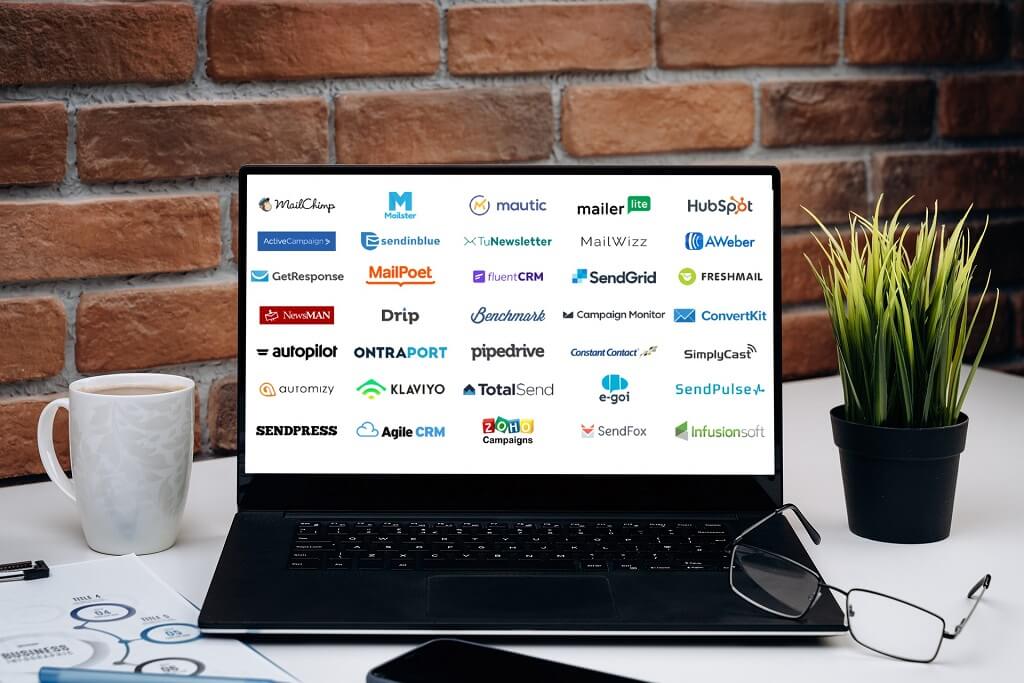 An email marketing service not only helps with great opt-in forms and email templates, but also:
An email marketing service not only helps with great opt-in forms and email templates, but also:
- Simplify the management of your contact list
- Automate replies while adding a personalized feel
- Segment users into groups
- Track the performance of your email marketing campaigns
- Make sure your emails avoid the spam folder
Segmentation and email automation are the most significant and frequently disregarded items on this list.
Why segmentation and automation make sense
Segmentation groups your subscribers based on specific criteria.
This can be things like how new they are on your list or their interests.
According to Jason Resnick, a specialist in email automation, segmentation and personalization are crucial.
Not only do they “improve your conversions,” but they also prevent your company’s brand and trust factor from eroding.
After sorting your subscribers into different segments, you can send them effective autoresponders.
Autoresponders are a series of emails that are sent automatically based on your users’ interactions. You can set this up in the software of your respective email service provider.
By using segmentation and email automation tools, you can increase your open rates and generate more engagement.
Here are a few of my top selections for email marketing services.
Systems.io
Systeme.io is ideal for both novice and expert users.
Systeme.io offers more than just autoresponders, which is its strong point.
It’s an all-in-one marketing tool.
There are a lot of email marketing features on systeme.io:
- Manage your contacts and lists
- Send unlimited marketing emails
- Use email marketing automation
- Add fields with our drag-and-drop features
- Create your own email marketing campaigns
As an all-inclusive platform, you get access to the entire digital marketing toolkit needed for any online business.
With systeme.io you can also:
- Build sales funnels with our drag-and-drop interface
- Generate sales with the e-commerce features
- Create a blog and produce informative content.
- Automate your business with evergreen webinars
- Build membership sites and online courses
- Run your own affiliate marketing program
Systeme.io has different pricing plans depending on your needs.
The Freemium plan allows you 2,000 contacts with unlimited emails and all the features listed above – it’s a true free email marketing service.
The Startup plan gives you 5,000 contacts with unlimited email and all the features listed above for just $27/month.
With the Webinar ($47/month) and Enterprise ($97/month) plans, you can increase the number of contacts to 10,000 and 15,000 respectively.
Sign up for one of our annual pricing plans and we’ll give you a free migration in addition to a 30% discount.
With systeme.io, your marketing efforts are fully scalable—whether you’re working for yourself or as a small business consultant.
And even our freemium plan gives you unlimited emails, so you don’t have to pay for an expensive tool before you even have an audience to sell your products to.
This email marketing software really has no downsides!
Mailchimp
 Mailchimp is another great tool for people starting out.
Mailchimp is another great tool for people starting out.
They offer a free plan for up to 2,000 contacts with 10,000 sends per month.
This platform is a good option for small businesses, but other elements of the sales process can come with surprising costs.
The more advanced features (e.g. automation) are only available in the paid plans, and if you want to combine your product sales with email, things get expensive.
Their paid plans range from $10/month to $30/month and offer a subscriber limit of up to 2,500 contacts.
Affiliate marketing has been banned on this platform and there are many restrictions on your email marketing opportunities unless you are willing to pay for it.
If you want real freedom in your future campaigns, you may need to look elsewhere.
Mailjet
 Mailjet is an email service provider used by more than 150,000 businesses.
Mailjet is an email service provider used by more than 150,000 businesses.
They provide both a free version and paid options.
With the free version of Mailjet, you can send 6,000 emails per month with a daily limit of 200 emails.
The Essential plan starts at $15/month – for up to 15,000 emails – and then increases if you want or need to send more emails.
While Mailjet is a powerful email marketing software, some options like marketing automation and A/B testing are not available on this plan.
The premium plan offers these features and starts at $25/month.
If you’re just starting out or want to try a platform before you buy, you might want to look at email service providers that offer a more comprehensive free plan.
Your first email marketing campaign must be created using the appropriate email marketing tool.
Once you find the email marketing software that works best for you, you need to use other tactics to get your message across to your audience.
Step#3: Increase your open rate
 The average email open rate is 15% to 25%, but it depends on your industry.
The average email open rate is 15% to 25%, but it depends on your industry.
The day with the best open rate in the world is Tuesday for all industries.
Opening your emails doesn’t have to depend on luck, good deliverability can make all the difference.
High e-mail deliverability (95% and more) is important because it means that almost all of your e-mails not only arrive on the right server but also in the intended inbox.
Your engagement with leads and viewers can directly impact this, as without engagement your messages are likely to be marked as spam.
Nobody opens messages in the spam folder – you should do everything you can to avoid this, as it negatively affects your open rate.
Here are some ways you can get a better open rate.
Get your timing right
Sending emails to your subscribers at the right time has a huge impact on whether they open.
Once you’ve settled on a good email marketing service, you can run A/B tests to determine what timeframes work best for your audience.
Write captivating subject lines
Subject lines often determine whether your email will be opened since it’s the first thing a subscriber sees.
You only have 1/10 of a second to make a good impression.
The key to an amazing subject line is to intrigue the subscriber enough to want to know what the email is about.
High open rates also come from emails that maintain a conversational tone—write like you would a friend.
Here are some fundamental rules for writing effective subject lines:
- Keep it short; the maximum viewable length for email messages on desktop and mobile platforms is 25–30 characters.
- Avoid spam words – Terms like “do not delete” or “exclusive offer” trigger spam filters with many email service providers
- Use Numbers – This makes the content of your email seem more attainable and backed up by measurable data
- Ask a Question – No one can resist knowing the answers, we’re programmed to be afraid of missing out
- Create a Cliffhanger – Add a touch of mystery and suspense so readers can’t resist learning more
Make your audience work for you
Making it easy for someone to join your email list will benefit your leads, but why not strengthen that relationship from the start?
Using a double opt-in email ensures that new leads who join your list are confident that they want to be there.
This tactic could also reduce the number of unsubscribes your email marketing efforts receive.
Then follow that double opt-in with something warm and fuzzy.
Always introduce yourself to new email contacts; it’s professional.
A welcome email is the first step in building a long-term relationship – it adds a “human” and approachable touch to your brand.
If you’re wondering how to get your welcome email right, here’s a simple example of an introductory email from Spotify:

Source: ReallyGoodEmails.com
Spotify confirms the subscription and tells the user what to expect.
Then they remind the user that there are no strings attached to their subscription – there is an unsubscribe option right there.
Here’s another brilliant welcome email from CB2:

Source: ReallyGoodEmails.com
What Makes It Effective?
- CB2 explains the value new members get from their newsletter
- The email informs new customers how to connect with them on social media
- Connecting with them through social media builds social proof and, in turn, attracts new customers.
These examples show us that it is important not to advertise a product straight away.
Presenting yourself with a sales pitch can seem desperate and even annoying.
Instead, use this opportunity to make a good first impression that cements the start of a new business relationship.
Another great idea is to ask new subscribers to add you to their “Trusted Contacts” list.
That way, you’ll immediately appear alongside personal emails and important notifications!
Generate mobile-friendly emails
 Most people check their email on mobile phones, tablets, or other devices – 55% of all online traffic comes from mobile devices.
Most people check their email on mobile phones, tablets, or other devices – 55% of all online traffic comes from mobile devices.
Optimizing your audience’s experience is a surefire way to increase your open rates.
Some changes like using a larger font and shorter subject lines make your content easier to read on smaller screens.
Once you’ve made sure your formatting is perfect, it’s time to focus your marketing efforts on the content of your email.
Step#4: Provide amazing content
When subscribers like your content, they look forward to future emails from you.
The foundation of a great email is a clear purpose.
Subscribers need to feel like they’ve earned their time – providing valuable and necessary information will make them read under the margin.
Here are some ways you can provide better content.
Write to a single person
Although your email reaches many inboxes, it’s important to write like it’s just one person.
You must understand your subscribers in order to execute this successfully.
The best way to get to know someone is to ask questions.
Quick polls can be your best tool in this regard.
This email from Supergoop asks its audience a relevant question and then immediately delivers the answer: their product range.

Source: ReallyGoodEmails.com
Email is seriously effective because:
- It helps readers find the perfect product for their specific needs
- Sends them straight to an order form so they can resolve their issue as quickly as possible
- Displays a clear call-to-action and discount that encourages clicks right off the bat
Remember, this strategy of writing to your ideal customer should feed into your marketing strategy and overall brand awareness.
Add some humor and wit
When you make someone laugh, you put them in a good mood—funny one-liners stick with people even after they’ve read your email.
Adding humor to your email can include:
- Insert funny GIFs into your content
- Use a fun play on words for your email copy
- Add playful emojis to emphasize emotions
Use humor in your email to get the skimmers’ attention, as Blue Apron did in this example:

Source: ReallyGoodEmails.com
These email marketers even included humor in the tasty and spooky graphics they utilized, going so far as to employ it throughout a successful email marketing campaign.
By making your readers smile or even laugh, you will convert some out of sheer joy and build a stronger relationship with them overall.
Speak like a friend
People will relate to your email if you can empathize with them – and nobody understands you like a friend.
Using a phrase like “I know you’re going to love this” for your call to action will come across much better than “Customers will love our new savings option.”
Lazy Oaf is known for its familiar tone in its emails and branding, as seen in this welcome email.
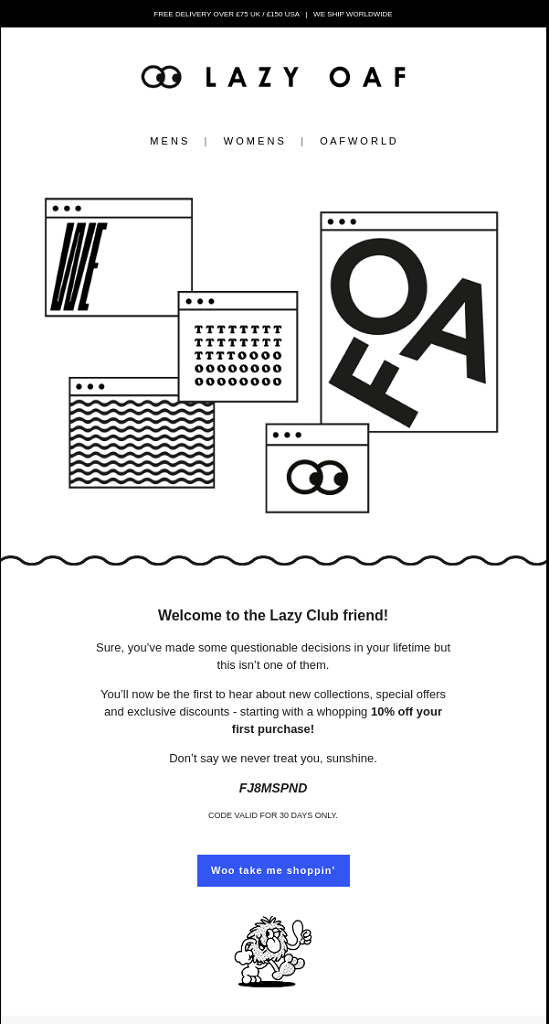
Source: ReallyGoodEmails.com
This greeting is loaded with both familiarity and fun — a surefire way to get people reading.
Maintaining a charming tone will do half the marketing work for you and build a rapport with your audience.
Personalization
Personalization has quickly become one of the email marketing best practices that you can’t ignore.
70% of Millennials are frustrated by brands that send irrelevant and impersonal emails.
Some ways to use this direct marketing tactic are:
- Personalized greetings to make leads feel important
- Dynamic content that adapts to readers’ interests
- Automated tagging of contacts to ensure content is relevant
- Personalized shopping suggestions to promote sales
- Customer-led content that celebrates their successes
This email from Twitch is 100% personalized and unique to each reader:

Source: ReallyGoodEmails.com
This type of email makes readers feel important and special and targets their love of nostalgia.
Personalized experiences increase the likelihood that people will make a purchase by 90% – you want that positive effect to extend to your online sales.
Linking to social media
While email definitely delivers a higher return on investment than social media (4200% and 40% respectively), the reach of the latter option cannot be denied.
Marketing via media and social streams should come second in your digital marketing strategy to re-engage potential customers.
You can add sharing buttons to your social pages in the email footer.
Take it a step further by offering a coupon to new followers if they follow this link – you’ll increase your online sales and see an increased click-through rate (CTR).
Depending on the email marketing platform you choose, you can add your affiliate program into the mix to maximize your email marketing efforts.
Step#5: Improve the delivery rate by avoiding these pitfalls
 Creating the perfect email is now in your hands, but there are other issues that can negatively impact your deliverability.
Creating the perfect email is now in your hands, but there are other issues that can negatively impact your deliverability.
Remember, your deliverability rate is the number of emails that successfully reach an email server divided by the number of emails you send.
Deliverability takes it a step further by measuring your email sends by how many actually make it into inboxes.
Some platforms have better delivery rates than others, so it’s important to consider these metrics when making your choice.
Here are my tips to improve your email deliverability:
- Buy your own domain and create an email address
- Send only to those who have given you permission to do so
- Delete and remove all inactive contacts
- Keep an eye on your stats on the dashboard
The email stats to keep an eye on are your bounces and spam.
What are bounces?
Bounces refer to emails that could not be delivered to the recipient.
Permanent problems like a nonexistent email address are called hard bounces.
Temporary problems such as the recipient’s mailbox being too full or the recipient’s server being offline are referred to as soft bounces.
Some email marketing services have lower bounce rates, so it’s important to keep that in mind when looking at different email marketing solutions.
Why are bounces important?
If an email address continues to be undeliverable, the address will be blocked.
It’s good to keep an eye on bounce rates so you can make sure your emails are reaching your subscribers.
If you’re suffering from a fairly high bounce rate, it’s a good idea to clean up your email list.
Stay away from spam folders
 Avoiding spam filters may seem like a no-brainer, but there are also some requirements that you must meet on your end.
Avoiding spam filters may seem like a no-brainer, but there are also some requirements that you must meet on your end.
Depending on where you live and what email service you use, you may need to follow the rules of the CAN-SPAM Act.
Control of Attack on Unsolicited Pornography and Marketing (CAN-SPAM) is a law that sets the rules for commercial email.
These are:
- Don’t use false information in your subject or header
- Don’t send unsolicited email
- Only send emails to your email subscribers
- Identify the message as an advertisement
- Provide correct contact information
- Include an unsubscribe link in every email
- Allow users to opt-out immediately
You must also follow the Direct Marketing Association (DMA) regulations in your country.
While this may seem like you’re losing your hard-earned subscribers, that’s not really the case.
Keep an eye on your unsubscribe rate and optimize your content or launch a retargeting campaign as part of an email marketing strategy to engage followers who have lost interest.
Step#6: Test your emails
Checking your email before sending it seems like an obvious step, but we couldn’t skip it.
If you let small mistakes slip, your brand image could be damaged.
Here are a few ways to ensure your brand stays flawless and flawless.
Run split tests
 Something as simple as trying a different subject line can improve your CTR by up to 26%.
Something as simple as trying a different subject line can improve your CTR by up to 26%.
One way you can use your audience’s behavior to design emails that best suit them is to do A/B or split testing.
Split testing is pretty easy to do, and you can apply it to individual emails, newsletters, and even your entire website.
With 1 in 8 A/B testing leading to real improvement, this is a tactic you shouldn’t miss.
Update your campaigns
Once you’ve created an email campaign, don’t forget it!
It may work perfectly after you finish it, but that is subject to change.
Make sure you regularly review and update any email campaigns you run:
- Updating internal links when you update content
- Adding accurate prices and offers
- Adjust the text to reflect the voice of your brand.
- Update logos and images you may include
Email campaigns are a fantastic method to automate a crucial aspect of your marketing, but if you don’t take the proper precautions, you can end yourself in the spam folder.
Perform final checks before you send
Would you trust a brand that looked like it couldn’t spell check? Didn’t think so.
Before sending emails, look out for:
- Typing error
- Forgotten, broken, or incorrect links
- Text formatting error
Using tools like Grammarly ensures you don’t undermine valuable content with silly mistakes.
Here are some other ways to optimize your email:
- Always check that test emails are formatted correctly on various screens, including those on desktops, tablets, and, most importantly, mobile devices.
- Don’t place two links next to or on top of each other – an email client can accidentally tap the wrong one on some devices
- Double-check that you’ve picked the right email list – you could lose your audience with an irrelevant email
When you’re sure your email is ready to send, hit send!
Step#7: Monitor your email marketing campaigns
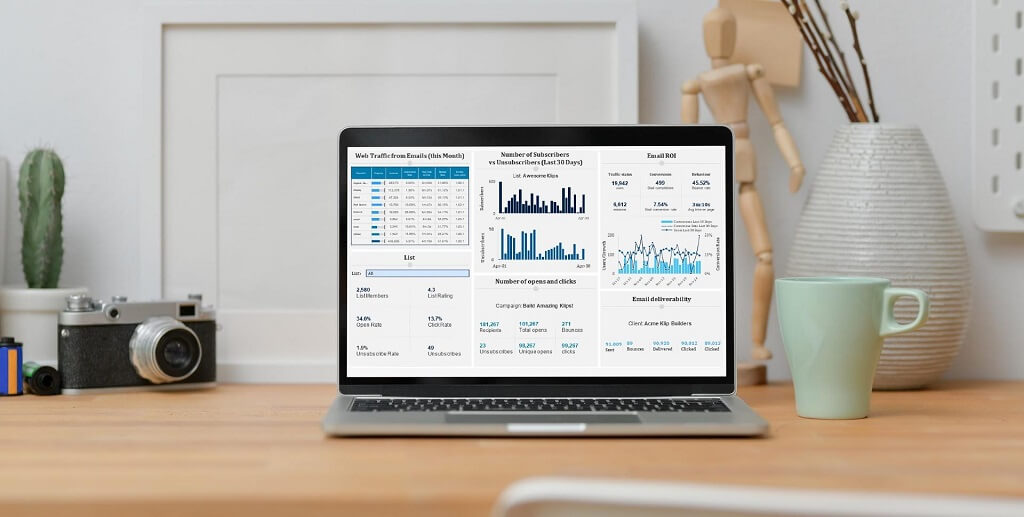 After implementing these email marketing strategies, you should measure the success of your email campaigns.
After implementing these email marketing strategies, you should measure the success of your email campaigns.
Check these metrics regularly to see if your marketing messages are serving their purpose.
Check your open rate
Your open rate refers to the percentage of your emails that are opened compared to the number that you sent.
Experienced email marketers are aware that the effectiveness of an email campaign depends on how many people read it.
Implementing small changes to elements like your email subject line can make the biggest difference.
Constantly monitoring your open rates and further investigating your subscribers’ attitudes is important.
You can measure customer loyalty as well as part of your email marketing success.
Analyze your clicks
This is the percentage of recipients who clicked a link in your email.
This is a metric to keep an eye on as you could be losing out on converting leads if your click-through rate (CTR) is below average (7.45%).
If the link to your online store is broken or your eCommerce store is not well optimized for mobile devices, it will affect your click-through rates and conversions.
A low CTR could also indicate that your CTA buttons are ineffective and need an overhaul.
Implement changes based on data
Don’t ignore what the analytics are trying to tell you – they are critical to your success.
If your deliverability is significantly lower than the number of people you sent the email to, it may mean that your emails are appearing as ” spam “.
If you have a high number of unsubscribes, you need to look at their feedback so you know why they chose to be removed from your list
Once you’ve optimized your emails to be deliverable and subscribable, it’s time to start measuring.
Compare your campaign performance to the industry average and your own goals before you start implementing changes.
There are a few ways to optimize here, but we recommend starting with A/B testing and brand optimization.
Conclusion
 Congratulations, you did it!
Congratulations, you did it!
Email marketing is a powerful marketing tool in your arsenal.
You can quickly become an expert in email marketing by following the methods listed above.
Remember that choosing the best email marketing software to meet your various demands and objectives is the most crucial step before you start your first email campaign.
The most efficient approach to send the kinds of campaigns necessary to move leads down the funnel and expand your email list is through this method.
To Your Success!
